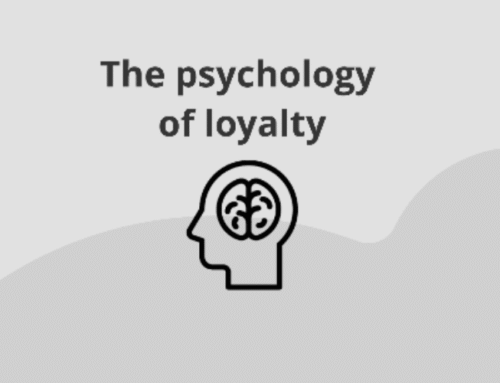CUSTOMER LIFETIME VALUE & SEGMENTATION
Summary: Customer lifetime value (CLV) is one of the most important key performance indicators for almost all retailers. How it’s defined is not as set in stone as you might think, though. With the addition of omnichannel loyalty software, businesses with offline points of sale now have the ability to understand who is buying what and how much. In this post, we explore how to better leverage omnichannel segmentation as a way dial in on customer lifetime value and what these metrics mean for your marketing strategy.
Measuring Customer Lifetime Value
Measuring Customer Lifetime Value is nothing new. In fact, it’s one of the most important metrics that large and small retailers alike, look at when assessing the relative growth of their business. And for good reason. This metric is a virtual gold mine of information that tells us how well we’re doing with attracting, retaining, and upselling each customer that walks into our store, ergo how loyal our customers are.
There are, in truth, two versions of the math required to calculate your results; ‘customer lifetime value’ and ‘simple customer lifetime value’. Neither of them are “right” or “wrong”. Which one you use, simply depends on your propensity for a bit of arithmetic and how exactly you want to be. The main difference between the two is that the simple CLV doesn’t account for year-over-year changes in revenue, acquisition costs, etc.

For our purposes (and to make sure you don’t fall asleep reading this), we’re going to assume that you’re using the ‘simple’ method, which looks something like this:
The profit an average customer brings in over the course of a year
(-)
The average amount it cost to acquire that customer
(*)
The number of years that customer shops with you
(=)
Customer Lifetime Value
Of course, there are other important variables that can be factored in here. Those include metrics like churn, decay rates, et al. While larger mid-market and enterprise business may want to dig a little deeper using these measurements, most small and medium sized businesses are just looking for a running tally of whether their customer lifetime value is growing from one year to the next and a simple LTV metric provides just that.
What LTV Alone, Doesn’t Address
Traditional models tend to present customer lifetime value as an aggregate data point – one which groups many different types of shoppers together, equally. Unfortunately, this methodology doesn’t tell us a whole lot about how LTV can (and almost always does) differ between varying buyer personas, as defined by factors like purchase history, shopping device, or location.
What would otherwise seem a highly relevant piece of data loses its value in the vacuum of context required to decipher it. Segmenting data points over multiple dimensions and demographics allows us to build a shopping experience that match each group’s expectations. And If there’s one thing we know, it’s that today’s shoppers demand highly relevant shopping experiences.
For example:
Demographic Segmentation and LTV
Customer lifetime value, in and of itself, doesn’t tell us that women over 50 tend to have greater LTV than men under 25. There’s a lot we can do to move the needle with this information, including manipulation of our marketing budget to lean heavily on the more profitable of the two groups.
Demographic SKU Level Segmentation and CLV
Going one step deeper, if we know that women over 50 who buy staple SKU’s, such as milk, eggs, and bread, tend to have a 20% higher customer lifetime value than women over 50 who tend to buy discretionary products like spices, baking ingredients, and snacks, we can further narrow our marketing budget down to focus on capturing women over 50 who buy the items in the first product set, in order to more effectively move the needle on our bottom line.
Connecting the Dots for Multichannel Retailers
Now, if you’re an eCommerce only vendor, you might be saying to yourself “that’s not true. I can do all of this easily through my CRM, Google Analytics, etc.” And you’re right. It’s important to know that for eCommerce only merchants, this type of product level segmentation has been available for years and large retailers frequently leverage it to decide what metrics should be driving targeted online advertising campaigns and the like.
Multichannel brick and mortar based retailers (who may have an ecommerce channel as part of their greater business strategy) on the other hand, have and continue to struggle with obtaining the same level of granularity in-store as they do online.
More specifically we get to the question of how to connect the two marketplaces. Insights on how and where customer shop can affect CLV as much as who they are and what they buy, after all.

For example:
Within our group of 50+ women who buy staple SKUs, we might find that online shoppers tend to place smaller orders, more frequently. Because of delivery fees, this would lead to a lower customer lifetime value and thereby prompt us to focus a higher percentage of the overall marketing budget on a customer set that is more likely to shop in-store.
Assuming that online data can be subbed in for in-store behavior is a false equivalency and a dangerous one, at that. Different types of customers may cost different amounts to acquire, serve, and close depending on how they shop.
Upgrading to Omnichannel
Omnichannel loyalty programs help unlock that problem by allowing merchants to track customer purchase behavior through tokenized account identifiers that can be retrieved over almost any channel available, including your website, brick and mortar locations, email, social, text, and more. This provides a single seamless customer record that is vital to understanding segmented customer lifetime value.
Understanding your flat CLV across channels is important, but perhaps more vital to multichannel retailers is understanding how each channel compares to the next.
Working with Segmented Customer Lifetime Value
Does it matter that your loyalty program only reaches 40% to 50% penetration? Yes and no. We need to ensure that all our buyer personas are represented in significant enough measure, of course. That said, we only need a percentage of our overall customer base, in order to create actionable insights from this sample data.
The more active users we get, the more reliable our core data will be. That means that it’s important that we direct marketing resources not just towards customer retention but bringing new customers into our program through the various user interfaces and merchandising calls to action.
Understanding Segmented Customer Lifetime Value
Let’s take another look at that formula WITH SKU level product and demographic data thrown in.
The profit a specific dimension of your customers brings in over the course of a year
(-)
The amount it cost to acquire them over a defined channel
(*)
The number of average number of years that customers shopping over that channel stay with you
(=)
Segmented Customer Lifetime Value
Contrary to what it may seem, we don’t suggest replacing your aggregate LTV model. Traditional LTV exercises can create valuable insights into your business’ aggregate success over time. We do suggest adding some texture and nuance with segmented customer lifetime value.
Customer Lifetime Value – The Bottom Line.
What we recognize today as LTV is, at some level, a product of the digital revolution and while it’s relatively easy for businesses that exist solely in the eCommerce realm to gather the required data points to understand the insights it provides, it’s another matter entirely for multichannel brick and mortar retailers.
None of this is to say that e-commerce only merchants don’t have quite a bit to gain by leveraging segmented LTV. Having access to this data and knowing how to put the pieces together into a single dashboard can be a daunting proposition. Wherever you do business, loyalty software can act as an excellent hub for collecting, communicating, and interpreting what this data means.
Omnichannel loyalty programs, however, can help your business close the loop on building segmented customer lifetime value into your overall key performance indicators in a way that exposes truly actionable intelligence.
If you like to learn more about how you can get started with bLoyal please contact our sales team or request a free demo, above.




